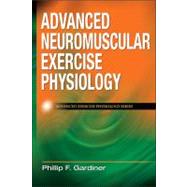
What is included with this book?
| Series Preface | p. ix |
| Preface | p. xi |
| Acknowledgments | p. xiv |
| Credits | p. xv |
| Muscle Fibers, Motor Units, and Motoneurons | p. 1 |
| Muscle Heterogeneity | p. 2 |
| Orderly Motor Unit Recruitment | p. 7 |
| Smaller Motoneurons Are More Excitable | p. 9 |
| Membrane Resistivity and Motoneuron Size | p. 9 |
| Other Factors Determining Action Potential Generation | p. 11 |
| Minimal Firing Rates and Afterhyperpolarization Durations | p. 12 |
| Motoneuron Current-Frequency Relationship and Excitability | p. 15 |
| Late Adaptation | p. 17 |
| Motoneuron PICs | p. 20 |
| Summary | p. 23 |
| Motor Unit Recruitment During Different Types of Movements | p. 25 |
| Measuring Human Motor Unit Recruitment | p. 25 |
| Influence of Task | p. 27 |
| Slow-Ramp Isometric Contractions | p. 28 |
| Maintained Isometric Contractions | p. 32 |
| Isometric Contractions in Various Directions | p. 34 |
| Isometric Contractions Versus Movements | p. 35 |
| Lengthening Contractions | p. 38 |
| Cocontraction of Agonists and Antagonists | p. 40 |
| Unilateral Versus Bilateral Contractions | p. 40 |
| Rhythmic Complex Contractions | p. 41 |
| Maximal Voluntary Contractions | p. 42 |
| Summary | p. 44 |
| Muscle Blood Flow and Metabolism | p. 46 |
| Muscle Blood Flow | p. 46 |
| Muscle Metabolism | p. 53 |
| Summary | p. 60 |
| Peripheral Factors in Neuromuscular Fatigue | p. 63 |
| Intramuscular Factors and Muscle Force | p. 64 |
| Involvement of Structures Other Than Muscle | p. 67 |
| Research From Animal Experiments | p. 77 |
| Summary | p. 80 |
| Central Factors in Neuromuscular Fatigue | p. 83 |
| Motoneuron Activity During Sustained Contractions | p. 83 |
| Isometric Versus Anisometric Tasks | p. 98 |
| Rotation of Motor Units? | p. 99 |
| Summary | p. 99 |
| Muscular Mechanisms in Aerobic Endurance Training | p. 101 |
| Chronic Muscle Stimulation | p. 102 |
| Coordination of Muscle Protein Systems | p. 104 |
| Pretranslational Control | p. 106 |
| Translational Control | p. 109 |
| Posttransiational Modifications | p. 110 |
| Simultaneous Expression of Isoforms | p. 112 |
| Adaptations Can Occur Ex Vivo | p. 112 |
| Adaptations Appear in a Specific Sequence | p. 112 |
| Thresholds of Activity for Adaptation | p. 114 |
| Chronic Stimulation and Atrophy | p. 115 |
| Metabolic Signals and the Adaptive Response | p. 117 |
| Degenerative and Regenerative Processes | p. 122 |
| Summary | p. 122 |
| Neural Mechanisms in Aerobic Endurance Training | p. 125 |
| Adaptation of the Neuromuscular Junction | p. 125 |
| Responses of Motoneurons | p. 130 |
| Adaptations of Spinal Cord Circuits | p. 134 |
| Summary | p. 139 |
| Muscle Molecular Mechanisms in Strength Training | p. 141 |
| Acute Responses in Protein Synthesis and Degradation | p. 142 |
| Connective Tissue Responses | p. 155 |
| Role of Muscle Damage | p. 156 |
| Role of Dietary Supplements | p. 157 |
| Summary | p. 158 |
| Muscle Property Changes in Strength Training | p. 161 |
| Increased Muscle Fiber Cross-Sectional Area | p. 161 |
| Fiber Type Composition | p. 162 |
| Muscle Fiber Number | p. 163 |
| Muscle Composition | p. 165 |
| Muscle Architecture | p. 166 |
| Muscle Fiber Ultrastructure | p. 166 |
| Evoked Isometric Contractile Properties | p. 167 |
| Changes in Muscle Force, Velocity, and Power | p. 169 |
| Fatigue Resistance | p. 171 |
| Role of Eccentric Contractions | p. 171 |
| Summary | p. 173 |
| Neural Mechanisms in Strength Training | p. 175 |
| Gains in Strength Versus Muscle Girth | p. 175 |
| Strength Gains Show Task Specificity | p. 176 |
| Surface EMG Response During MVC | p. 178 |
| Imaginary Strength Training | p. 179 |
| Reflex Adaptations | p. 179 |
| Cross Education | p. 181 |
| Decreased Activation of Antagonists | p. 183 |
| Changes in Motor Unit Recruitment | p. 183 |
| Changes in Motor Cortex | p. 186 |
| Summary | p. 186 |
| References | p. 189 |
| Index | p. 225 |
| About the Author | p. 229 |
| Table of Contents provided by Ingram. All Rights Reserved. |
The New copy of this book will include any supplemental materials advertised. Please check the title of the book to determine if it should include any access cards, study guides, lab manuals, CDs, etc.
The Used, Rental and eBook copies of this book are not guaranteed to include any supplemental materials. Typically, only the book itself is included. This is true even if the title states it includes any access cards, study guides, lab manuals, CDs, etc.